10 Shocking GIFs of Workplace Asbestos Exposure
Awareness & ResearchWritten by Daniel King | Edited by Walter Pacheco
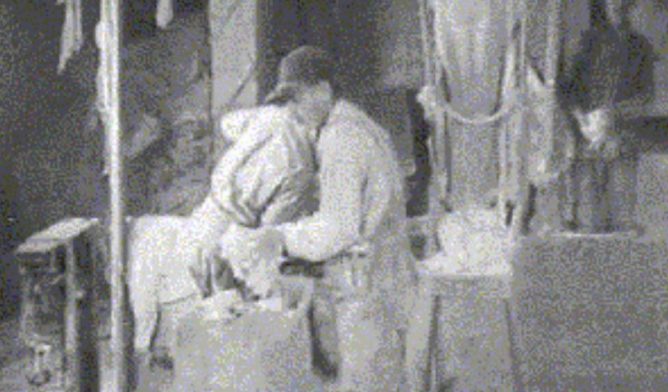
Imagine working in a cloud of toxic mineral fibers that can lodge in your lung tissue permanently. It doesn’t cause any immediate symptoms, so you think nothing of it until years later — when you gradually lose your ability to breathe.
In modern America, it’s difficult for most people to comprehend the full scale of the tragedy created by the asbestos industry. Fortunately, the Library of Congress hosts a digital copy of a silent film called “The Story of Asbestos,” so you can see for yourself how the industry put profit before people’s safety.
Produced around 1921 by the H.W. Johns-Manville Company, it illustrates mining and manufacturing processes that lead to thousands of deaths from asbestos exposure diseases such as mesothelioma, asbestosis and lung cancer.
The following scenes take place at a mine in Arizona and a factory in New Jersey — both owned by Johns-Manville.
1. Blasting Asbestos Out of the Ground
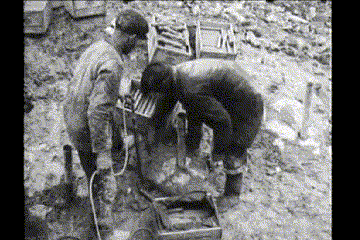
The first step is to drill a hole into asbestos-containing rock and then pack it full of dynamite. The resulting explosion makes it easy to collect fragments of asbestos ore.
The dust cloud from the blast is packed with a high concentration of toxic asbestos fibers.
2. Sorting Asbestos into Grades
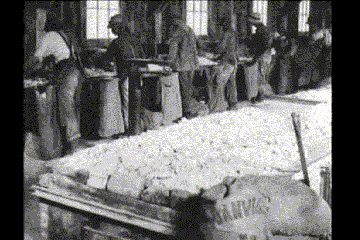
In the cobbing room, workers smash chunks of asbestos ore with hammers. Then they remove the asbestos by hand and sort it into various grades of fiber.
This is a perfect example of turning a nonfriable material (asbestos ore) into a friable material (loose asbestos fibers). Friable asbestos materials are the most dangerous.
3. Bagging Asbestos for Shipment
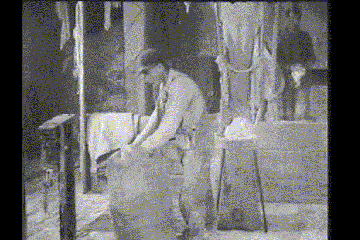
As asbestos fibers pour down a chute from upstairs, workers stuff it into sacks. The fluffy consistency of asbestos means it can be stomped down by standing in the bag.
The workers in this scene are handling and stomping on nearly pure asbestos, without any safety protection. Today, U.S. regulations state that workers must be given respiratory protection if their workplace exposes them to more than 0.1 asbestos fibers per cubic centimeter of air.
4. Receiving Asbestos at the Factory
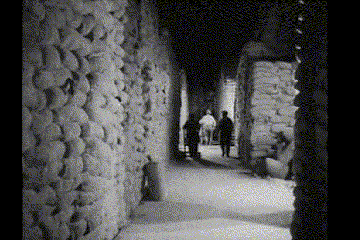
At the factory, workers walk through a warehouse full of asbestos received from the mine. In the film, a title card proclaims, “10,000 tons of Asbestos in this room.”
In the boom years from 1925 to 1929, the U.S. consumed more than 200,000 tons of asbestos per year. U.S. asbestos consumption peaked in 1973 at 803,000 tons, according to the U.S. Geological Survey.
5. Crushing Unrefined Asbestos
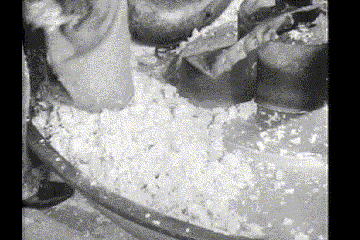
Workers pour asbestos from the mine into a crusher. The heavy rollers of the crusher finish separating the asbestos fibers from the other minerals they are mixed with. These other minerals are then shaken out as sand, leaving pure asbestos.
The process of crushing and shaking out the asbestos filled the factory with airborne asbestos fibers. Microscopic asbestos fibers cannot be seen, smelled or tasted. Inhaling them causes no immediate symptoms, but it can leads to horrible diseases such as mesothelioma cancer later in life.
6. Making Asbestos Paper Pulp
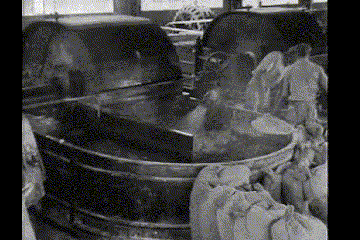
Workers pour refined asbestos into a machine that turns it into paper pulp. The pulp is then pressed and dried to make asbestos paper.
Asbestos was also spun into yarn, which was used to make gasket material and brake linings. Cement mixed with asbestos was used to build and repair boilers.
7. Cutting and Crimping Asbestos Paper
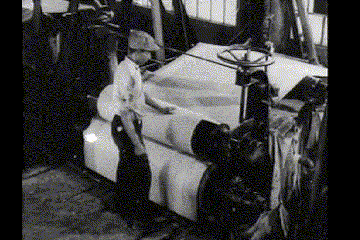
Some asbestos paper is cut into flat sheets for millboard. Other asbestos paper is crimped for making cardboard.
Flat sheets of asbestos paper were also soaked in asphalt to manufacture roofing material.
8. Winding Asbestos Pipe Insulation
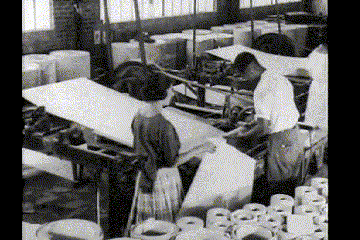
Workers wind asbestos paper into rolls. Using crimped paper creates air spaces between the layers of paper, making it better for insulation.
Asbestos paper was popular because it was fireproof and heat-resistant. However, cutting or tearing it inevitably leads to toxic exposure.
9. Trimming and Splitting Pipe Insulation
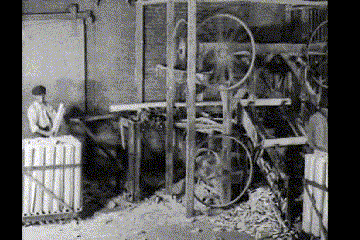
Workers feed rolls of asbestos paper through power saws that trim them to a standard size and split them lengthwise. Cutting each roll in half made it easy to install the insulation on high-temperature pipes.
The power saws constantly filled the work environment with toxic asbestos dust. Historically, most asbestos-related diagnoses have traced back to occupational exposure.
10. Organizing Different Sizes of Asbestos Insulation
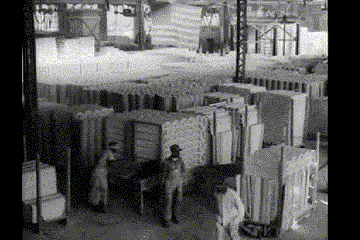
Workers place assorted types of asbestos pipe insulation in a warehouse. The daily output of the Johns-Manville factory could cover several miles of pipe.
Aside from paper pipe insulation, the factory also manufactured molded pipe insulation made from a mixture of asbestos and magnesia. Much of the pipe insulation was not split lengthwise but instead shipped whole, so insulators could cut it as needed on site.
Many of the workers at mines and factories like those pictured above paid a terrible price for working with asbestos. The asbestos industry covered up the risks of asbestos exposure as long as it could, but ultimately the truth came to light.
However, special interests in Washington, D.C., continue to work on behalf of the asbestos industry. This is why asbestos is still not banned in the United States.







